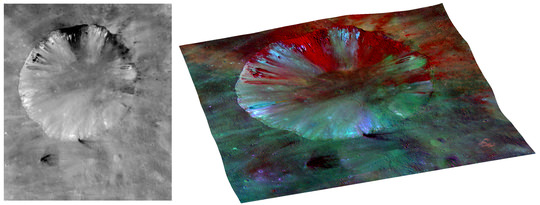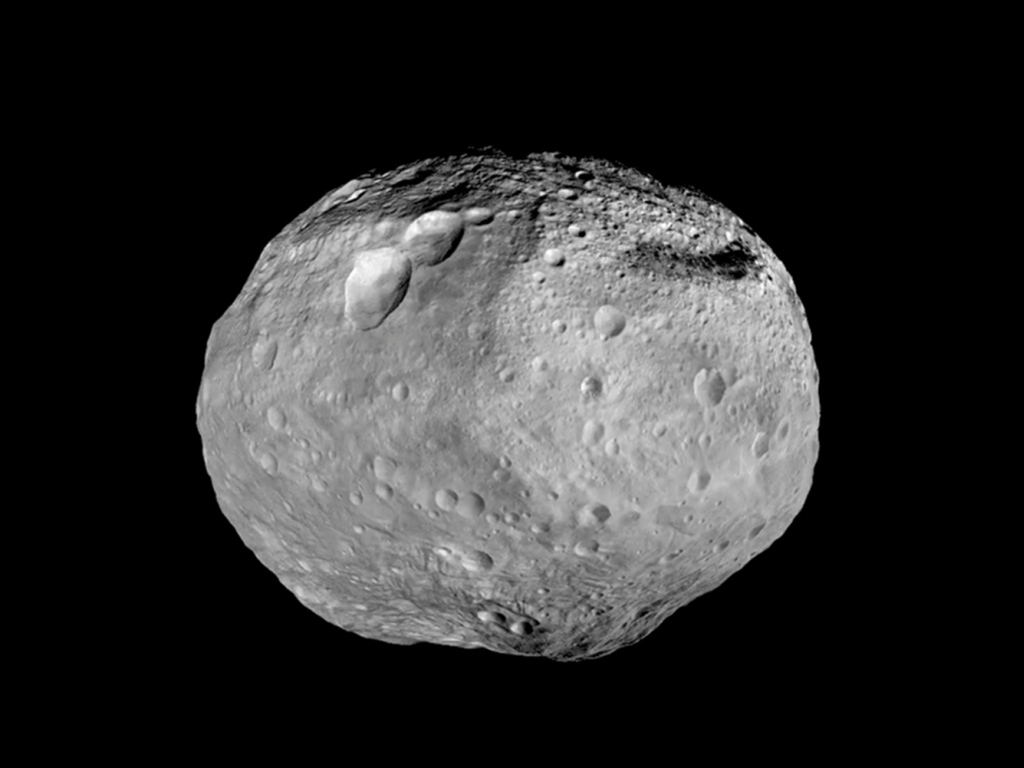While “dark materials” may leave some of us thinking about a certain Philip Pullman book series, on the asteroid Vesta its presence belies something equally exotic: old smaller asteroid impacts on its surface.
The dark stuff on the lighter surface has puzzled researchers since it was discovered in 2011 (and has been brought up in other studies), but a new team says it has found that serpentine is among the components. Because that mineral can’t survive temperatures that are more than 400 degrees Celsius (752 degrees Fahrenheit), this means that scenarios such as volcanic eruptions can’t have caused it. This leaves only smaller asteroids, the team says.
“These meteorites are regarded as fragments of carbon-rich asteroids. The impacts must have been comparatively slow, because an asteroid crashing at high speeds would have produced temperatures too high to sustain serpentine,” the Max Planck Institute for Solar System Research stated.

“In a previous study, scientists from the MPS had calculated how dark material would be distributed on Vesta as a result of a low-speed oblique impact. Their results are consistent with the distribution of dark material on the edge of one of the two large impact basins in the southern hemisphere.”
The results came from analyzing images the NASA Dawn spacecraft took of Vesta between July 2011 and September 2012. The researchers recalibrated the data and also backed up their results by examining serpentine in laboratory conditions.
The research was published in the journal Icarus and you can also read a summary of the research here, from a presentation at the 2014 Lunar and Planetary Science Conference.

